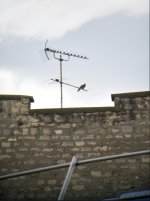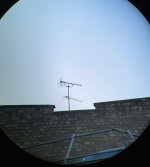henry link
Well-known member
I wouldn't use these or any other phone-scoped images to evaluate binoculars. Firstly, lateral CA will be heavily influenced the exact alignment of the camera lens and the eyepiece. It's very hard to avoid at least slight misalignment which will likely favor one or the other binocular.
Secondly the true aperture of these phone cameras has become increasingly difficult to discover. It's not in the camera specs, which now call the focal ratio the "aperture" and always give a full frame "equivalent" focal length instead of the true focal length, so the true aperture can't even be calculated from the focal length and focal ratio. This matters because phone lenses all have very small true apertures, typically around 2-2.5mm, so they are inherently incapable of accepting the full exit pupil of most binoculars. A 2.5mm phone lens will stop down every 8x binocular to about 20mm.
Secondly the true aperture of these phone cameras has become increasingly difficult to discover. It's not in the camera specs, which now call the focal ratio the "aperture" and always give a full frame "equivalent" focal length instead of the true focal length, so the true aperture can't even be calculated from the focal length and focal ratio. This matters because phone lenses all have very small true apertures, typically around 2-2.5mm, so they are inherently incapable of accepting the full exit pupil of most binoculars. A 2.5mm phone lens will stop down every 8x binocular to about 20mm.









